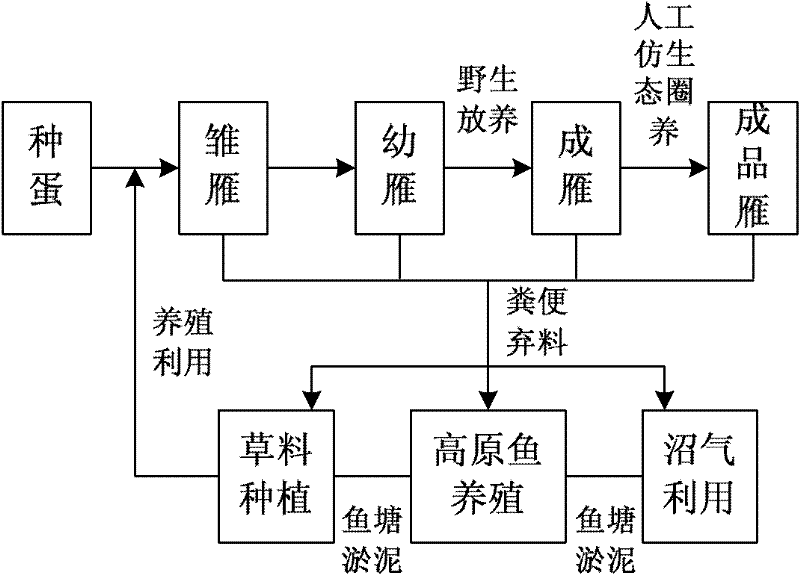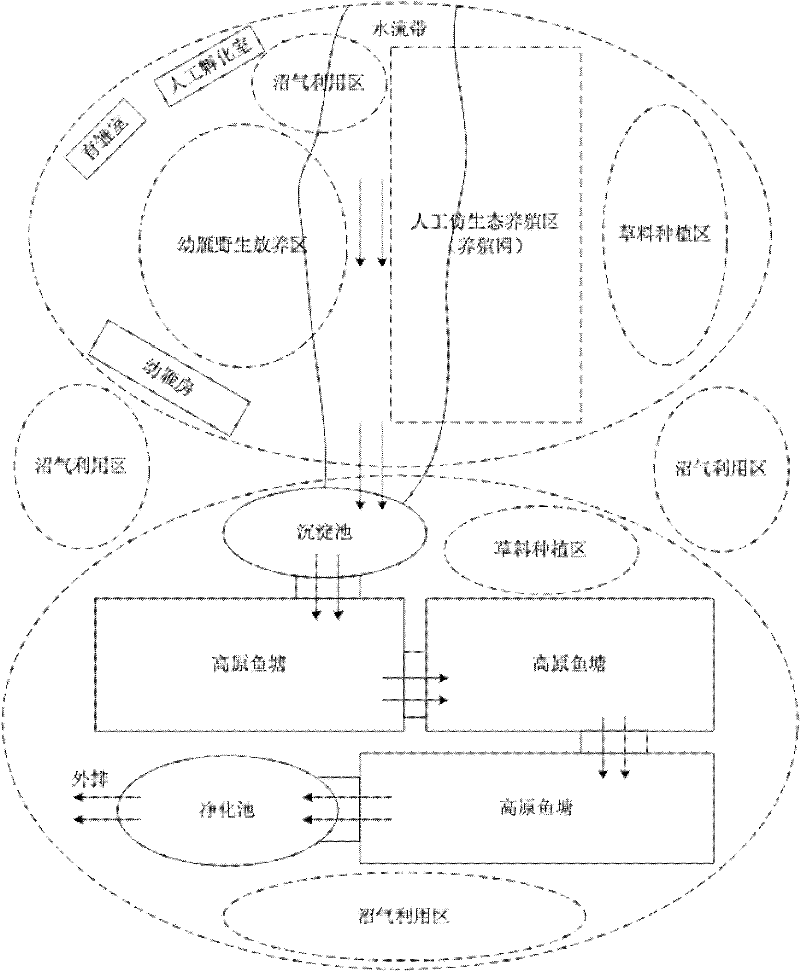Method for hatching and breeding anser indicus
A breeding method and bar-headed goose technology, applied in animal husbandry and other fields, can solve problems such as difficult control of temperature-changing incubation conditions, increased failure probability of farms, failure to popularize and apply, etc., to achieve comprehensive utilization and harmless treatment, and to ensure the original The effect of high ecological quality and improving hatching rate
- Summary
- Abstract
- Description
- Claims
- Application Information
AI Technical Summary
Problems solved by technology
Method used
Image
Examples
Embodiment 1
[0019] figure 1 It is a technical flow chart of the bar-headed goose artificial hatching breeding method. Such as figure 1 Bar-headed geese were artificially hatched and cultured as shown.
[0020] 1. Bar-headed goose artificial hatching method
[0021] 1.1 Incubation preparation
[0022] The eggs are screened for the first time, and the eggs that pass the preliminary inspection are sterilized on the outside and preheated naturally in the incubation room. After the surface temperature of the eggs reaches room temperature, they are hatched on the code plate; when the code plate is used, the eggs are kept with their heads up.
[0023] The incubator is cleaned, disinfected, debugged and preheated in advance.
[0024] 1.2 Incubation
[0025] (1) Artificial incubation condition control
[0026] Bar-headed goose eggs are hatched at a constant temperature. The temperature is controlled at 38.0°C±0.1°C and the relative humidity is controlled at 56.0%±2.0%. During the hatching pe...
Embodiment 2
[0059] Such as figure 2 , 3 The three-dimensional culture of bar-headed goose plateau fish is shown.
PUM
| Property | Measurement | Unit |
|---|---|---|
| Area | aaaaa | aaaaa |
Abstract
Description
Claims
Application Information
 Login to View More
Login to View More - R&D
- Intellectual Property
- Life Sciences
- Materials
- Tech Scout
- Unparalleled Data Quality
- Higher Quality Content
- 60% Fewer Hallucinations
Browse by: Latest US Patents, China's latest patents, Technical Efficacy Thesaurus, Application Domain, Technology Topic, Popular Technical Reports.
© 2025 PatSnap. All rights reserved.Legal|Privacy policy|Modern Slavery Act Transparency Statement|Sitemap|About US| Contact US: help@patsnap.com



